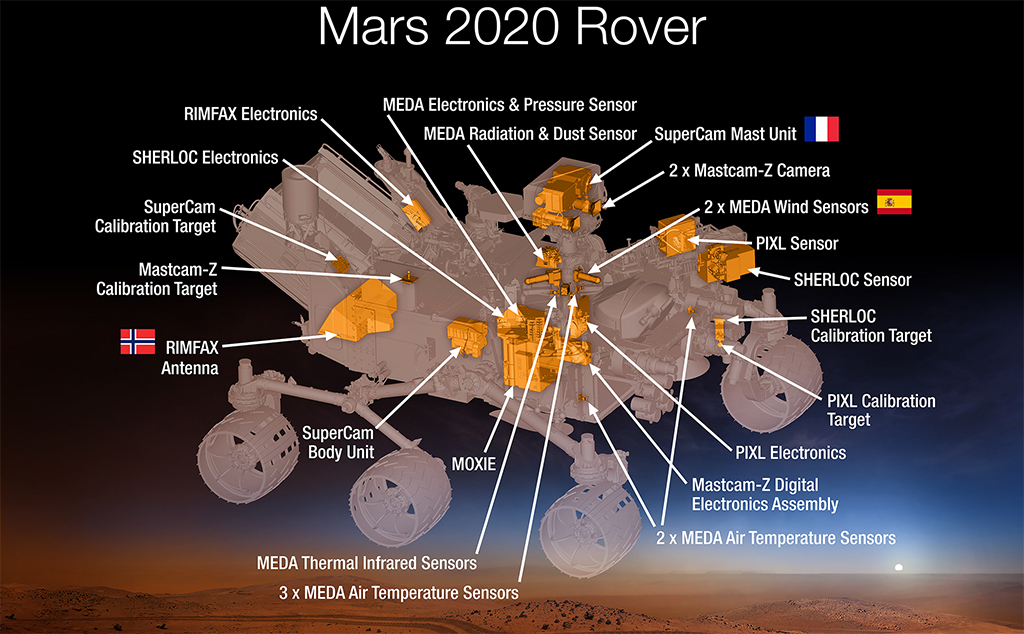

Space
NASA’s Mars Rover blasts off on ULA rocket for mission to the red planet
The summer of worldwide Mars missions saved the best for last with the successful launch of NASA’s most advanced rover ever. Following on the heels of the successful launches of China’s Tianwen-1 Mars spacecraft and the United Arab Emirates Hope Mars mission, NASA joined the 309 million miles (497 million kilometers) interplanetary journey to the Red Planet with the successful launch of the Mars 2020 Perseverance mission. Safely secured to the top of a mighty United Lunch Alliance Atlas V 541 rocket and Centaur upper stage, NASA’s car-sized Perseverance rover – and accompanying Ingenuity helicopter – left Earth on Thursday morning (July 30) in spectacular fashion. Getting off this planet, however, is only the beginning.
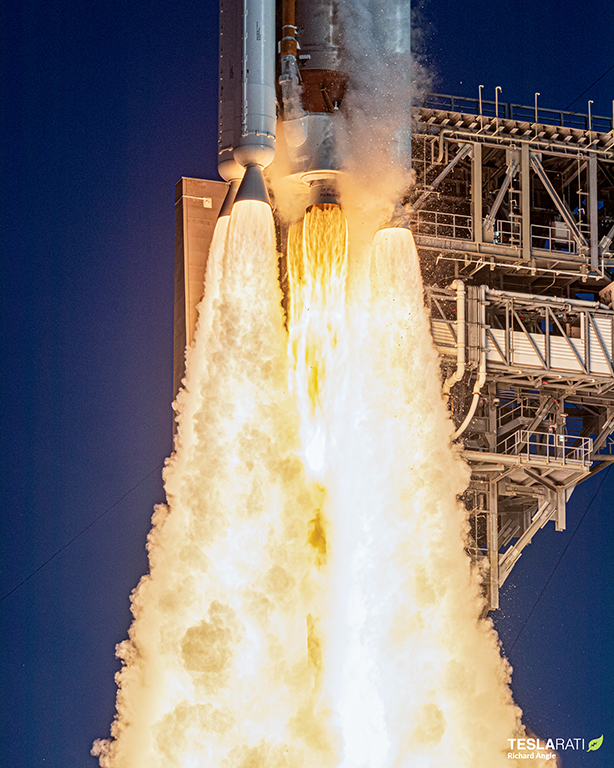
Why go to Mars again?
The Mars 2020 Perseverance mission is perhaps NASA’s most ambitious Mars mission. Formally announced in 2012, the then-unnamed Mars 2020 rover would be tasked with studying the Red Plane in a way that had never been attempted before. It would be collecting samples for eventual return to Earth in search of finding evidence of ancient microbial life.
NASA’s 2012 Curiosity mission uncovered the fact that Mars was rich in material that could have potentially supported microbial life once upon a time. Now, eight years later, the Perseverance mission will hunt for and collect the evidence to back up that claim.
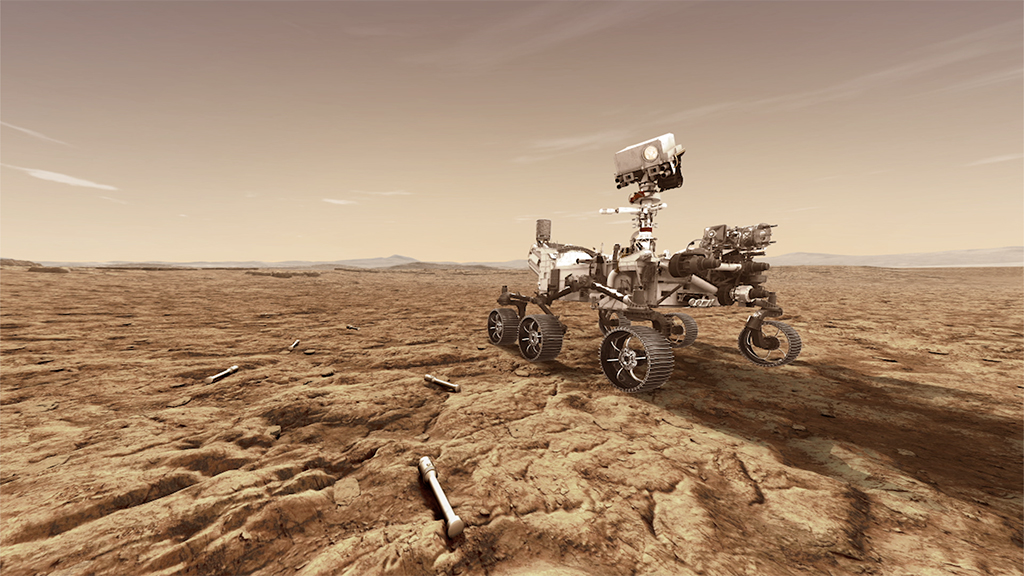
A rover tasked with such an important astrobiological mission required NASA to develop the most technologically advanced range of scientific instruments that had ever been sent to Mars. As described by NASA, Perseverance is outfitted with seven different “state-of-the-art tools for acquiring information about Martian geology, atmosphere, environmental conditions, and potential signs of life (biosignatures).” Perseverance will be the first rover to collect and cache samples of the Martian surface to later be collected and eventually returned to Earth by future joint NASA and European Space Agency missions.
It is also the first rover to travel to Mars with a vast array of high-definition cameras with advanced imaging capability. Perseverance will also carry high-definition microphones with it, allowing, for the first time, the sounds of Mars to be captured. This will include the ability to hear entry, descent, and landing from the point of view of the rover, as well as the sound of what it’s like to drive over the Martian terrain.
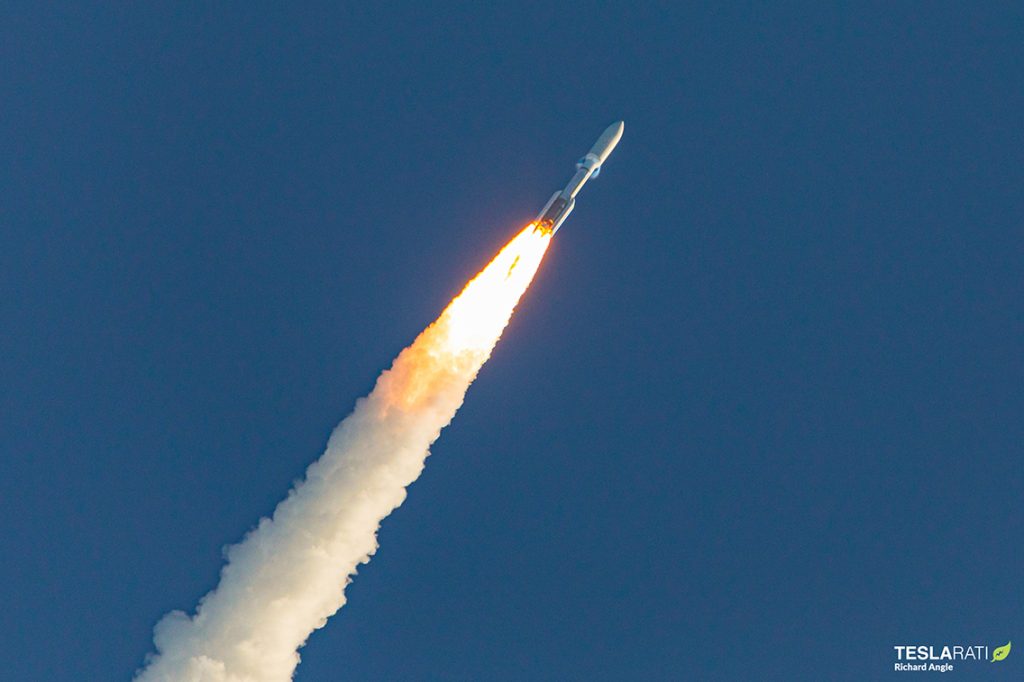
Perseverance also carries with it two demonstration missions. Onboard is MOXIE, or the Mars Oxygen ISRU Experiment, designed to test technology that can convert carbon dioxide in the Martian atmosphere into oxygen – an important precursor experiment to one day sending humans to Mars. Also aboard is Ingenuity, the first-ever rotorcraft – or helicopter – designed to fly on another planet. Ingenuity will test the effectiveness of rotorcrafts on other planets with different atmospheric and gravitational makeup than Earth to perhaps one day serve as planetary observational crafts or delivery systems.
Leaving Earth was the easy part, sort of
A major challenge that faced the Mars 2020 mission was completing final integrations during the global Coronavirus pandemic, which required most NASA and JPL personnel to work from home. NASA LSP senior launch director, Omar Baez, stated that “I never would have thought that a launch director would be working from home and I’ve done that for the last five months.” He went on further to state that “It’s humbling to see how our whole team from the range, to our partners at JPL, to our partners at ULA, to our folks at headquarters – how we all had to adjust to work in this environment, to work electronically.” Although challenging, the Mars 2020 mission persevered to overcome the obstacles and meet the targeted launch date.
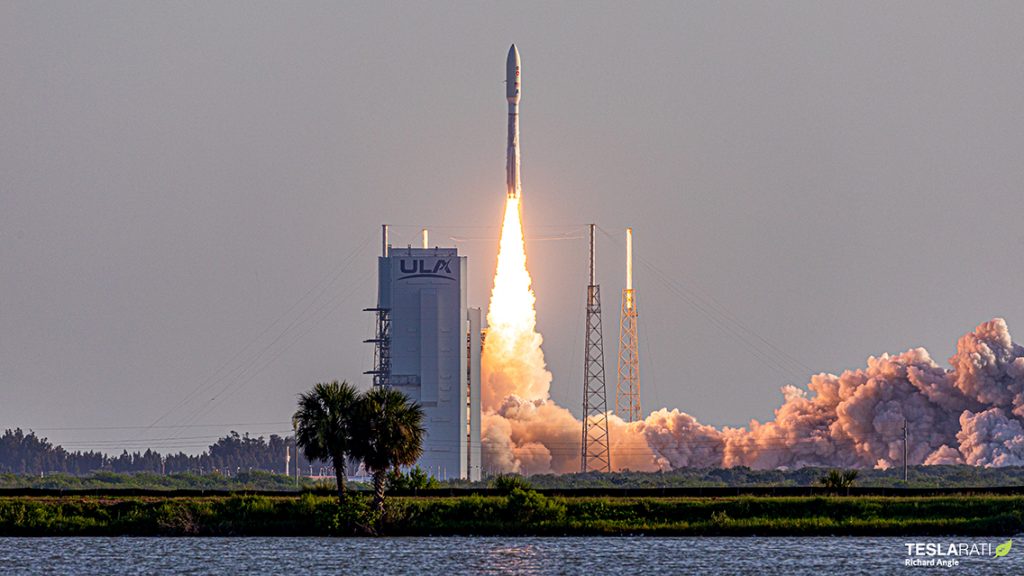
The Mars 2020 mission initially targeted a July 18th liftoff at the very opening of the available one-month interplanetary launch window. The mission did suffer a few minor setbacks during the integration phase when ULA had to take a few days to address an issue with a crane at the Vertical Integration Facility pushing the launch date to July 22nd. Then, as explained in a statement provided by NASA the launch date suffered another delay, this time eight days to July 30, “due to launch vehicle processing delays in preparation for spacecraft mate operations.”
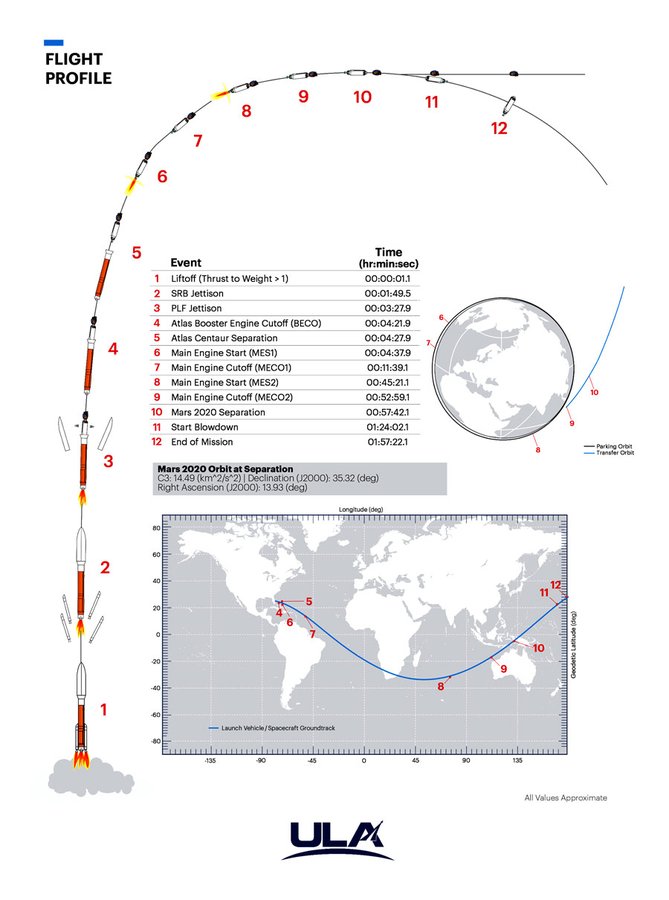
The ULA Atlas V in its 541 configuration consisting of a common core booster and four solid rocket motors fully stacked with the precious payload stood 197 feet (60 meters) tall. The Atlas V 541 provided 2 million lbs of thrust rocketing the spacecraft east away from Florida over the Atlantic Ocean. After approximately ninety seconds of flight, the solid rocket motors burned out, separating away from the booster followed quickly by stage separation. The Centaur upper-stage was the workhorse of the mission left to deliver the Mars 2020 payload to its Earth parking orbit.
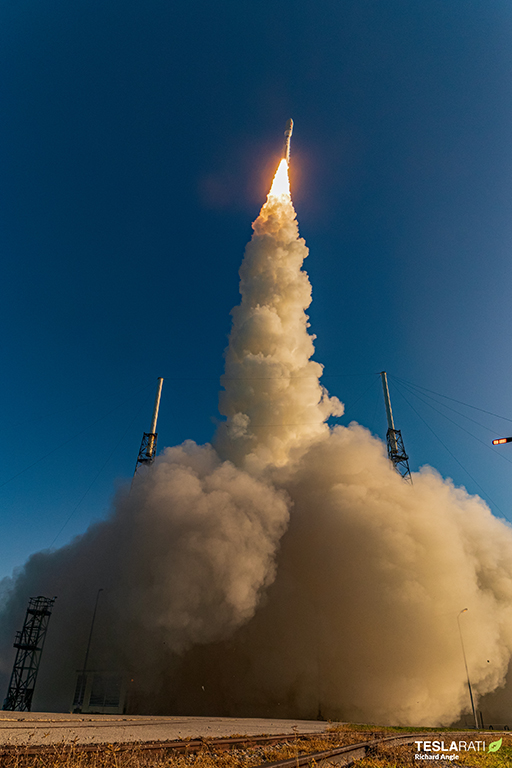
After a coast phase lasting about 30 minutes, the upper-stage Centaur performed another eight-minute long nominal burn delivering the payload to a heliocentric – or solar bound, rather than Earthlocked – orbit for the Trans Mars Injection maneuver lining it up to intercept with Mars in February 2021. Upon spacecraft separation and successfully propelling the Perseverance mission onward to Mars, the Centaur upper-stage performed what is called a blowdown maneuver for planetary protection, ensuring that it would miss Mars. Twenty minutes later, the Perseverance spacecraft initiated its transmitter to communicate with Earth, and a good acquisition of signal was received by NASA’s international array of giant radio antennas, the Deep Space Network.
The Perseverance rover and Ingenuity helicopter are expected to continue on the journey to the Red Planet and attempt entry, descent, and landing on February 18, 2020.

News
SpaceX shades airline for seeking contract with Amazon’s Starlink rival

SpaceX employees, including its CEO Elon Musk, shaded American Airlines on social media this past weekend due to the company’s reported talks with Amazon’s Starlink rival, Leo.
Starlink has been adopted by several airlines, including United Airlines, Qatar Airways, Hawaiian Airlines, WestJet, Air France, airBaltic, and others. It has gained notoriety as an extremely solid, dependable, and reliable option for airline travel, as traditional options frequently cause users to lose connection to the internet.
Many airlines have made the switch, while others continue to mull the options available to them. American Airlines is one of them.
A report from Bloomberg indicates the airline is thinking of going with a Starlink rival owned by Amazon, called Leo. It was previously referred to as Project Kuiper.
American CEO Robert Isom said (via Bloomberg):
“While there’s Starlink, there are other low-Earth-orbit satellite opportunities that we can look at. We’re making sure that American is going to have what our customers need.”
Isom also said American has been in touch with Amazon about installing Leo on its aircraft, but he would not reveal the status of any discussions with the company.
The report caught the attention of Michael Nicolls, the Vice President of Starlink Engineering at SpaceX, who said:
“Only fly on airlines with good connectivity… and only one source of good connectivity at the moment…”
CEO Elon Musk replied to Nicolls by stating that American Airlines risks losing “a lot of customers if their connectivity solution fails.”
American Airlines will lose a lot of customers if their connectivity solution fails
— Elon Musk (@elonmusk) December 14, 2025
There are over 8,000 Starlink satellites in orbit currently, offering internet coverage in over 150 countries and territories globally. SpaceX expands its array of satellites nearly every week with launches from California and Florida, aiming to offer internet access to everyone across the globe.
Currently, the company is focusing on expanding into new markets, such as Africa and Asia.
News
Tesla hints at Starlink integration with recent patent
“By employing polymer blends, some examples enable RF transmission from all the modules to satellites and other communication devices both inside and outside the vehicle.”

Tesla hinted at a potential Starlink internet terminal integration within its vehicles in a recent patent, which describes a vehicle roof assembly with integrated radio frequency (RF) transparency.
The patent, which is Pub. No U.S. 2025/0368267 describes a new vehicle roof that is made of RF-transparent polymer materials, allowing and “facilitating clear communication with external devices and satellites.”
Tesla believes that a new vehicle roof design, comprised of different materials than the standard metallic or glass elements used in cars today, would allow the company to integrate modern vehicular technologies, “particularly those requiring radio frequency transmission and reception.
Tesla has recently filed a US patent application on integrating RF transparent materials into the roof structure.
“facilitating clear communication with external devices and satellites”
Tesla fleet is getting @Starlink connectivity integration soon. LFG @Tesla @elonmusk… pic.twitter.com/bLa8YtPLd1
— Chansoo Byeon (@Chansoo) December 9, 2025
Instead of glass or metallic materials, Tesla says vehicles may benefit from high-strength polymer blends, such as Polycarbonate, Acrylonitrile Butadiene Styrene, or Acrylonitrile Styrene Acrylate.
These materials still provide ideal strength metrics for crashworthiness, stiffness for noise, vibration, and harshness control, and are compliant with head impact regulations.
They would also enable better performance with modern technologies, like internet terminals, which need an uninterrupted signal to satellites for maximum reception. Tesla writes in the patent:
“By employing polymer blends, some examples enable RF transmission from all the modules to satellites and other communication devices both inside and outside the vehicle.”

One of the challenges Tesla seems to be aware of with this type of roof design is the fact that it will still have to enable safety and keep that at the forefront of the design. As you can see in the illustration above, Tesla plans to use four layers to increase safety and rigidity, while also combating noise and vibration.
It notes in the patent that disclosed examples still meet the safety requirements outlined in the Federal Motor Vehicle Safety Standards (FMVSS).
Starlink integrated directly into Tesla vehicles would be a considerable advantage for owners. It would come with a handful of distinct advantages.
Initially, the inclusion of Starlink would completely eliminate cellular dead zones, something that is an issue, especially in rural areas. Starlink would provide connectivity in these remote regions and would ensure uninterrupted service during road trips and off-grid adventures.
It could also be a critical addition for Robotaxi, as it is crucial to have solid and reliable connectivity for remote monitoring and fleet management.
Starlink’s growing constellation, thanks to SpaceX’s routine and frequent launch schedule, will provide secure, stable, and reliable internet connectivity for Tesla vehicles.
Although many owners have already mounted Starlink Mini dishes under their glass roofs for a similar experience, it may be integrated directly into Teslas in the coming years, either as an upgrade or a standard feature.
Investor's Corner
SpaceX IPO is coming, CEO Elon Musk confirms
However, it appears Musk is ready for SpaceX to go public, as Ars Technica Senior Space Editor Eric Berger wrote an op-ed that indicated he thought SpaceX would go public soon. Musk replied, basically confirming it.
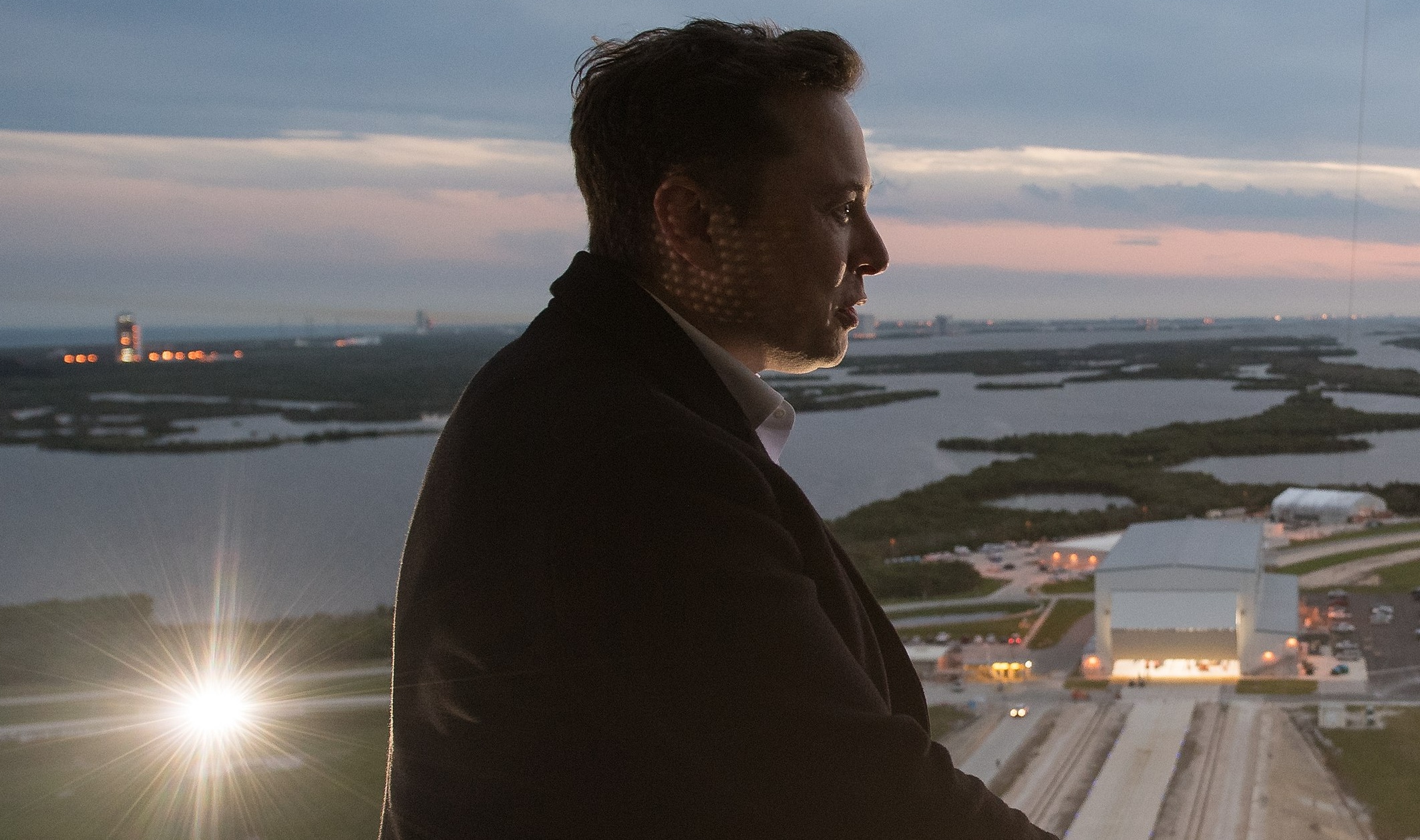
Elon Musk confirmed through a post on X that a SpaceX initial public offering (IPO) is on the way after hinting at it several times earlier this year.
It also comes one day after Bloomberg reported that SpaceX was aiming for a valuation of $1.5 trillion, adding that it wanted to raise $30 billion.
Musk has been transparent for most of the year that he wanted to try to figure out a way to get Tesla shareholders to invest in SpaceX, giving them access to the stock.
He has also recognized the issues of having a public stock, like litigation exposure, quarterly reporting pressures, and other inconveniences.
However, it appears Musk is ready for SpaceX to go public, as Ars Technica Senior Space Editor Eric Berger wrote an op-ed that indicated he thought SpaceX would go public soon.
Musk replied, basically confirming it:
As usual, Eric is accurate
— Elon Musk (@elonmusk) December 10, 2025
Berger believes the IPO would help support the need for $30 billion or more in capital needed to fund AI integration projects, such as space-based data centers and lunar satellite factories. Musk confirmed recently that SpaceX “will be doing” data centers in orbit.
AI appears to be a “key part” of SpaceX getting to Musk, Berger also wrote. When writing about whether or not Optimus is a viable project and product for the company, he says that none of that matters. Musk thinks it is, and that’s all that matters.
It seems like Musk has certainly mulled something this big for a very long time, and the idea of taking SpaceX public is not just likely; it is necessary for the company to get to Mars.
The details of when SpaceX will finally hit that public status are not known. Many of the reports that came out over the past few days indicate it would happen in 2026, so sooner rather than later.
But there are a lot of things on Musk’s plate early next year, especially with Cybercab production, the potential launch of Unsupervised Full Self-Driving, and the Roadster unveiling, all planned for Q1.
